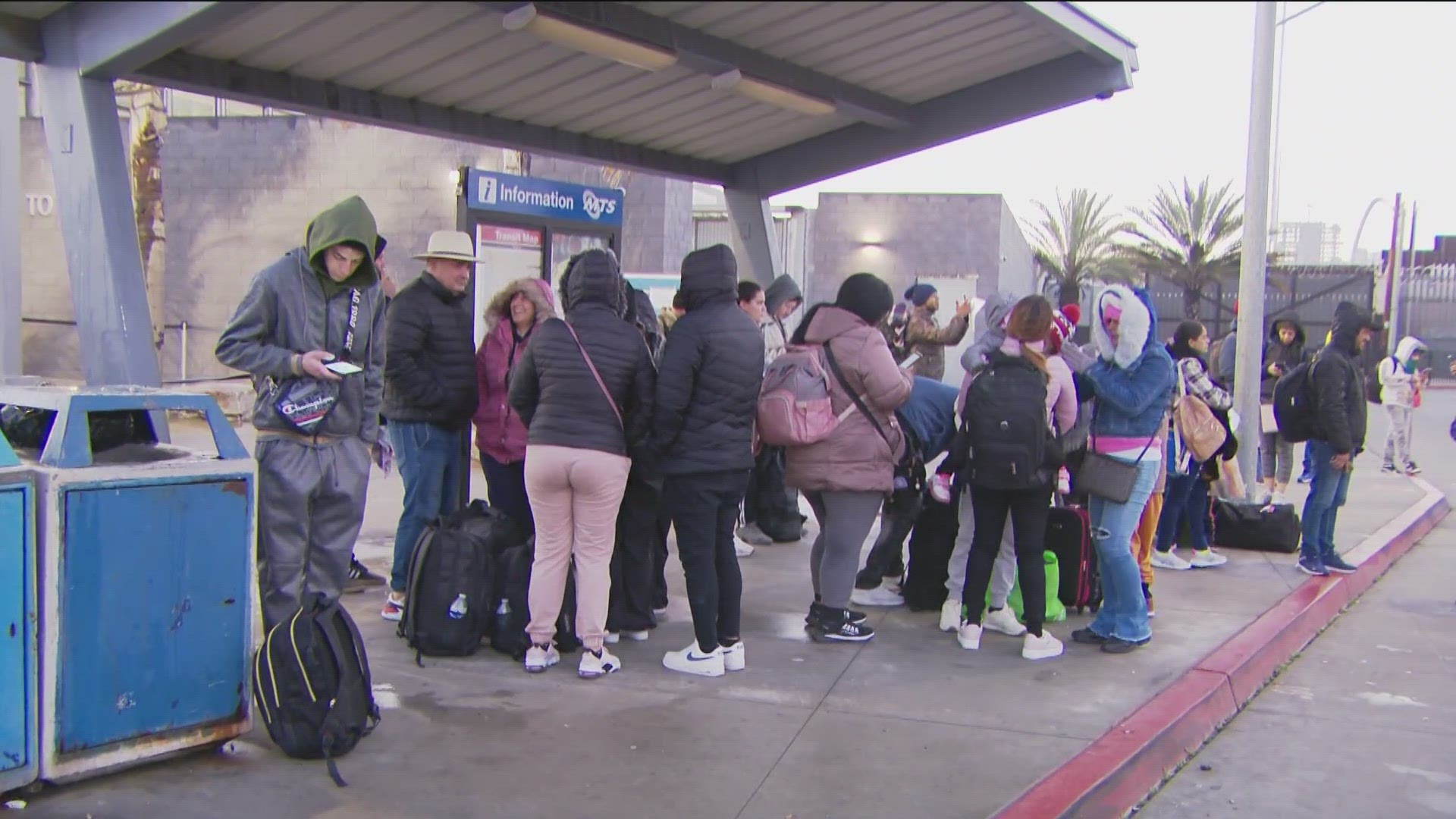SAN DIEGO — The PedWest border crossing in San Ysidro resumed limited operations on Thursday following its closure in December.
Starting at 6 a.m. on January 4, northbound operations reopened until 2 p.m. daily, and southbound operations are open each day from 3 to 11 p.m.
The PedWest crossing was closed in September and December, with U.S. Customs and Border Protection stating both closures were in response to an influx of migrants at the San Diego County border.
CBP officials said last month the closure would allow the agency to redirect resources to assist the U.S. Border Patrol at other border crossings in the county.
Some local elected officials criticized the latest closure as a blow to local businesses and people who cross regularly for work or to visit family on either side of the border.
Kenia Zamarripa, Executive Director of International Affairs at the San Diego Regional Chamber of Commerce, said border communities lose about $2 billion every year because of long wait times.
Around 200 businesses closed in San Ysidro during the pandemic because of travel restrictions. Zamarripa worries the latest closures could severely impact those already struggling to get back on their feet after the pandemic.
“To do this just in the height of the holidays, you know, when San Ysidro is looking at the bigger time of the year – this is millions of dollars every single weekend. That’s an economic loss that goes straight to those families and their employees," said Zamarripa.
In a statement regarding the Dec. 9 closure, CBP officials said the increased migrant presence was "fueled by smugglers peddling disinformation to prey on vulnerable individuals and encourage migration."
A number of other border crossings along the southern United States were closed for similar reasons and Thursday will also mark the reopening of three other crossings in Arizona and Texas.
"CBP will continue to prioritize our border security mission as necessary in response to this evolving situation," according to an agency statement. "We continue to assess security situations, adjust our operational plans, and deploy resources to maximize enforcement efforts against those non-citizens who do not use lawful pathways or processes -- such as scheduling an appointment via CBP One -- and those without a legal basis to remain in the United States."
Those seeking to travel through the crossing were advised to check wait times.

